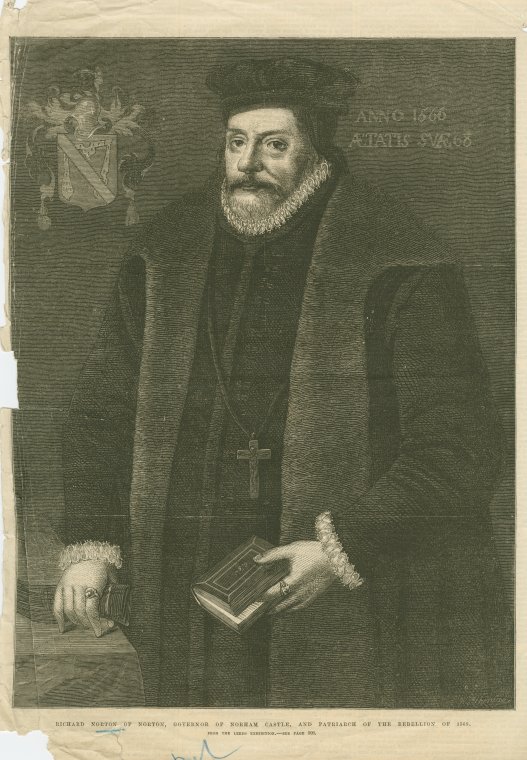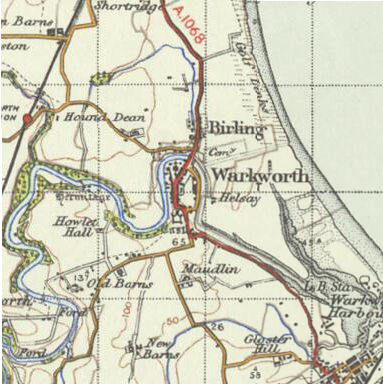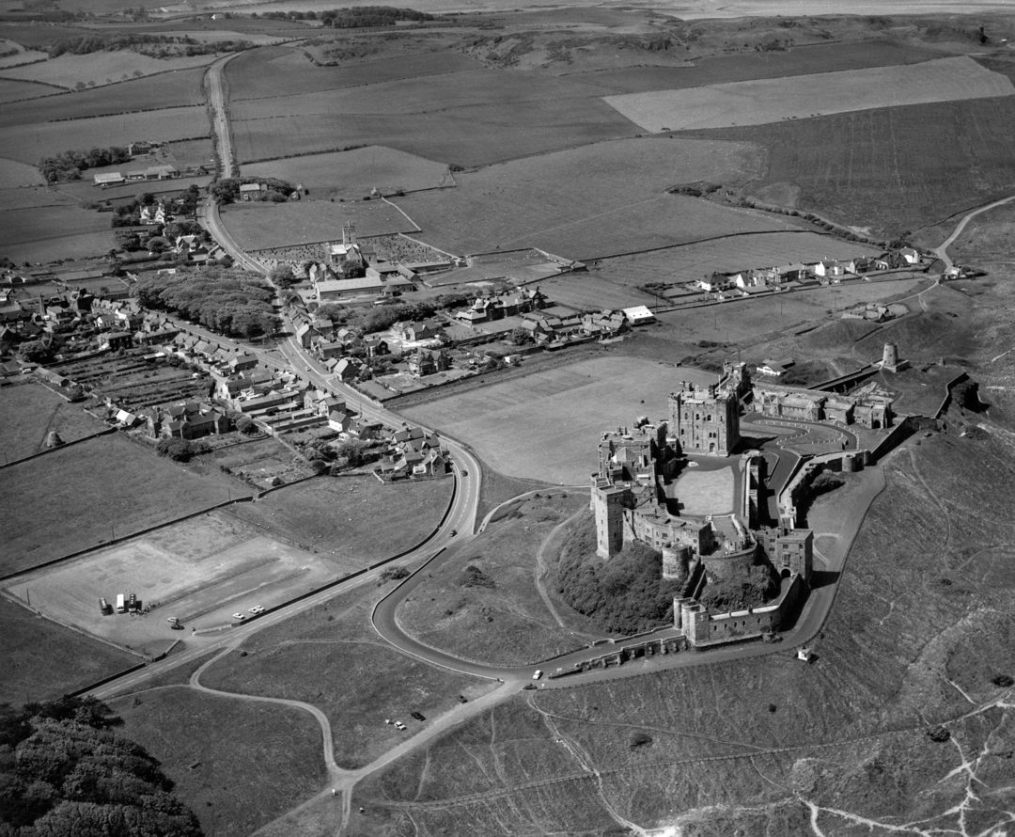|
Benton Park View
Benton Park View, located in Benton, a suburb of the City of Newcastle upon Tyne, United Kingdom, is a multi-agency site of the UK Government. The complex is one of the largest secure civilian government complexes in Europe. The site is owned by Newcastle Estates Partnership and the principal tenants are His Majesty's Revenue and Customs (HMRC) and the Department for Work and Pensions (DWP). The site consists of a large group of office blocks within a secure perimeter. The official name of the site is "Benton Park View", but it is known best, especially in Newcastle, as "The Ministry", after its original purpose as the administrative centre for the Ministry of Pensions (later the Ministry of Pensions and National Insurance). The site is well served by public transport. The nearest stop on the Tyne and Wear Metro system is Longbenton, which also serves the nearby suburb in North Tyneside (north of the railway line) called 'Longbenton', and a station at Four Lane Ends is located ... [...More Info...] [...Related Items...] OR: [Wikipedia] [Google] [Baidu] |
Districts Of England
The districts of England (also known as local authority districts or local government districts to distinguish from unofficial city districts) are a level of subnational division of England used for the purposes of local government. As the structure of local government in England is not uniform, there are currently four principal types of district-level subdivision. There are a total of 309 districts made up of 36 metropolitan boroughs, 32 London boroughs, 181 two-tier non-metropolitan districts and 58 unitary authorities, as well as the City of London and Isles of Scilly which are also districts, but do not correspond to any of these categories. Some districts are styled as cities, boroughs or royal boroughs; these are purely honorific titles and do not alter the status of the district or the powers of their councils. All boroughs and cities (and a few districts) are led by a mayor who in most cases is a ceremonial figure elected by the district council, but—after local gov ... [...More Info...] [...Related Items...] OR: [Wikipedia] [Google] [Baidu] |
Pension, Disability And Carers Service
The Pension, Disability and Carers Service was an executive agency of the Department for Work and Pensions , type = Department , seal = , logo = Department for Work and Pensions logo.svg , logo_width = 166px , formed = , preceding1 = , jurisdiction = Government of the United Kingdom , headquarters = Caxton House7th Floor6–12 Tothill Stree ... (DWP) which was created in April 2008. The PDCS brought together two former separate executive agencies, The Pension Service and the Disability and Carers Service. These two agencies kept their corporate branding and provided services under their separate identities. The two agencies shared roughly fifty percent of the same customers Whitfield et al, p. 6 and the rationalisation of services was believed to be likely to provide a better service. Its status as an executive agency was removed on 1 October 2011 with its functions being brought back inside the DWP. Further reading *Whitfield,G; Waring, A; Goode, J; Phung, V and ... [...More Info...] [...Related Items...] OR: [Wikipedia] [Google] [Baidu] |
Belsay Castle
Belsay Castle is a 14th-century medieval castle situated at Belsay, Northumberland, England. It is a Scheduled Monument and a Grade I listed building. The main structure, a substantial three-storey rectangular pele tower with rounded turrets and battlements, was constructed about 1370, and was the home of the Middleton family. In 1614 Thomas Middleton built a new manor house attached to the tower. A west wing was added in 1711 but was largely demolished in 1872 by Sir Arthur Middleton when the remainder of the house was considerably altered. The castle was abandoned as a residence by the family in the early 19th century when Sir Charles Monck built Belsay Hall close by. The interiors were largely removed and it was then used as a ready-made folly, as was fashionable among the aristocracy at the time, serving as the setting for garden parties and other entertainments. The castle is administered by English Heritage and is open to the public. See also *Castles in Great Brita ... [...More Info...] [...Related Items...] OR: [Wikipedia] [Google] [Baidu] |
Tynemouth Castle And Priory
Tynemouth Castle is located on a rocky headland (known as Pen Bal Crag), overlooking Tynemouth Pier. The moated castle-towers, gatehouse and keep are combined with the ruins of the Benedictine priory where early kings of Northumbria were buried. The coat of arms of the town of Tynemouth still includes three crowns commemorating the tradition that the Priory had been the burial place for three kings. Origins of the Priory Little is known of the early history of the site, although archaeologists have discovered traces of 2 circular wooden houses, one dating from before AD 43 and the other from around the 2nd century AD. Some Roman stones have been found there, but there is no definite evidence that it was occupied by the Romans. The Priory was founded early in the 7th century, perhaps by Edwin of Northumbria. In 651 Oswin, king of Deira was murdered by the soldiers of King Oswiu of Bernicia, and subsequently his body was brought to Tynemouth for burial. He became St Oswin and hi ... [...More Info...] [...Related Items...] OR: [Wikipedia] [Google] [Baidu] |
Langley Castle
Langley Castle is a restored medieval tower house, now operated as a hotel, situated in the village of Langley in the valley of the River South Tyne some south of Haydon Bridge, Northumberland, England. It is a Grade I listed building. Details It was built in the middle of the 14th century by Sir Thomas de Lucy as a great H plan H-shaped tower of four storeys. Before this the site was the seat of the Barons of Tynedale in the 12th century, from whom descend the Tyndall family. It was attacked and severely damaged in 1405 by the forces of Henry IV in the campaign against the Percys and Archbishop Scrope. It remained as a ruin until it was bought and restored by a local historian, Cadwallader Bates, in 1882. Bates died in 1902 and his wife Josephine continued the restoration. After she died in 1932 the building remained empty until it was used as a barracks in the Second World War, following which it was used as a girls' school. In the 1980s, it was bought by the Robb famil ... [...More Info...] [...Related Items...] OR: [Wikipedia] [Google] [Baidu] |
Norham Castle
Norham Castle (sometimes Nornam) is a castle in Northumberland, England, overlooking the River Tweed, on the border between England and Scotland. It is a Grade I listed building and a Scheduled Ancient Monument. The castle saw much action during the wars between England and Scotland. Early history The castle was founded when Ranulf Flambard, Bishop of Durham from 1099 to 1128, gave orders for its construction in 1121, in order to protect the property of the bishopric in north Northumberland, from incursions by the Scots. In 1136 David I of Scotland invaded Northumberland and captured the castle. It was soon handed back to the bishopric, but was captured again in 1138 during another invasion. This time, the structure of the castle was substantially damaged. It remained derelict until Hugh de Puiset, Bishop of Durham from 1153 to 1195, had the castle rebuilt. The work was probably directed by Richard of Wolviston, who was the bishop's architect. In 1174 Hugh de Puiset supported ... [...More Info...] [...Related Items...] OR: [Wikipedia] [Google] [Baidu] |
Alnwick Castle
Alnwick Castle () is a castle and country house in Alnwick in the English county of Northumberland. It is the seat of the 12th Duke of Northumberland, built following the Norman conquest and renovated and remodelled a number of times. It is a Grade I listed building now the home of Ralph Percy, 12th Duke of Northumberland and his family. In 2016, the castle received over 600,000 visitors per year when combined with adjacent attraction the Alnwick Garden. History Alnwick Castle guards a road crossing the River Aln. Ivo de Vesci, Baron of Alnwick, erected the first parts of the castle in about 1096. Beatrix de Vesci, the daughter of Yves de Vescy, married the Constable of Chestershire and Knaresborough, Eustace fitz John. By his marriage to Beatrix de Vesci he gained the baronies of Malton and Alnwick. The castle was first mentioned in 1136 when it was captured by King David I of Scotland. At this point it was described as "very strong". It was besieged in 1172 and again i ... [...More Info...] [...Related Items...] OR: [Wikipedia] [Google] [Baidu] |
Dunstanburgh Castle
Dunstanburgh Castle is a 14th-century fortification on the coast of Northumberland in northern England, between the villages of Craster and Embleton. The castle was built by Earl Thomas of Lancaster between 1313 and 1322, taking advantage of the site's natural defences and the existing earthworks of an Iron Age fort. Thomas was a leader of a baronial faction opposed to King Edward II, and probably intended Dunstanburgh to act as a secure refuge, should the political situation in southern England deteriorate. The castle also served as a statement of the earl's wealth and influence and would have invited comparisons with the neighbouring royal castle of Bamburgh. Thomas probably only visited his new castle once, before being captured at the Battle of Boroughbridge as he attempted to flee royal forces for the safety of Dunstanburgh. Thomas was executed, and the castle became the property of the Crown before passing into the Duchy of Lancaster. Dunstanburgh's defences were expanded ... [...More Info...] [...Related Items...] OR: [Wikipedia] [Google] [Baidu] |
Chillingham Castle
Chillingham Castle is a medieval castle in the village of Chillingham in the northern part of Northumberland, England. It was the seat of the Grey and Bennett (later Earls of Tankerville) families from the 15th century until the 1980s, when it became the home of Sir Edward Humphry Tyrrell Wakefield, 2nd Baronet, who is married to a member of the original Grey family. A large enclosed park in the castle grounds is home to the Chillingham cattle, a rare breed, consisting of about 130 head of white cattle. The castle is a Grade I listed building. In addition to the castle itself, a number of structures on the grounds of the castle are listed Grade II on the National Heritage List for England. These include the West Lodge and gateway, the garden wall to the west, the gateway and garden wall to the north, the gateway and garden wall to the south east, and the garden wall to the west. A pair of urns in the Italian Garden are also listed Grade II. History The castle was originally ... [...More Info...] [...Related Items...] OR: [Wikipedia] [Google] [Baidu] |
Warkworth Castle
Warkworth Castle is a ruined medieval castle in Warkworth in the English county of Northumberland. The village and castle occupy a loop of the River Coquet, less than a mile from England's north-east coast. When the castle was founded is uncertain: traditionally its construction has been ascribed to Prince Henry of Scotland, Earl of Northumbria, in the mid-12th century, but it may have been built by King Henry II of England when he took control of England's northern counties. Warkworth Castle was first documented in a charter of 1157–1164 when Henry II granted it to Roger fitz Richard. The timber castle was considered "feeble", and was left undefended when the Scots invaded in 1173. Roger's son Robert inherited and improved the castle. Robert was a favourite of King John, and hosted him at Warkworth Castle in 1213. The castle remained in the family line, with periods of guardianship when heirs were too young to control their estates. King Edward I sta ... [...More Info...] [...Related Items...] OR: [Wikipedia] [Google] [Baidu] |
Lindisfarne Castle
Lindisfarne Castle is a 16th-century castle located on Holy Island, near Berwick-upon-Tweed, Northumberland, England, much altered by Sir Edwin Lutyens in 1901. The island is accessible from the mainland at low tide by means of a causeway. History The castle is located in what was once the very volatile border area between England and Scotland; the area was also frequently attacked by Vikings. Lindisfarne Priory was abandoned between 1536 and 1537 as part of the Dissolution of the Monasteries. After Henry VIII suppressed the priory, his troops used the remains as a naval store. In 1542 Henry VIII ordered Thomas Manners, 1st Earl of Rutland to fortify the site against possible Scottish invasion. By December 1547, Ralph Cleisbye, Captain of the fort, had guns that included a wheel-mounted demi-culverin, two brass sakers, a falcon, and another fixed demi-culverin. Taking advantage of the island's strategic location, in 1549, a small fort was built on a high rock known as Beblo ... [...More Info...] [...Related Items...] OR: [Wikipedia] [Google] [Baidu] |
Bamburgh Castle
Bamburgh Castle is a castle on the northeast coast of England, by the village of Bamburgh in Northumberland. It is a Grade I listed building. The site was originally the location of a Celtic Brittonic fort known as ''Din Guarie'' and may have been the capital of the kingdom of Bernicia from its foundation in 420 to 547. In that latter year, it was captured by King Ida of Bernicia. After passing between the Britons and the Anglo-Saxons three times, the fort came under Anglo-Saxon control in 590. The fort was destroyed by Vikings in 993, and the Normans later built a new castle on the site, which forms the core of the present one. After a revolt in 1095 supported by the castle's owner, it became the property of the English monarch. In the 17th century, financial difficulties led to the castle deteriorating, but it was restored by various owners during the 18th and 19th centuries. It was finally bought by the Victorian era industrialist William Armstrong, who completed its resto ... [...More Info...] [...Related Items...] OR: [Wikipedia] [Google] [Baidu] |







.jpg)
